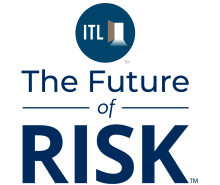The insurance industry in 2025 faces challenges that build on the difficulties of recent years. Economic pressures, escalating claims costs, and the increasing frequency of extreme weather events are putting brokers, agents and insurance companies in uncharted territory. With homeowners' premiums projected to rise by more than 15% in high-risk regions and auto premiums set to climb 5%, all of us in the industry are forced to reassess our strategies and client engagement.
To address this shift, VIU by HUB's Outlook and Personal Insurance Market Rate Report has identified three pivotal trends shaping the landscape.
1. Extreme Weather Is Now a Constant Threat
We're no longer dealing with seasonal risks – natural disasters are happening year-round. In 2024, the U.S. experienced $62 billion in insured losses - 70% above the 10-year average. Hurricanes, floods and wildfires are becoming more frequent, pushing carriers to reconsider their exposure. Some are even exiting high-risk markets entirely, leaving clients to scramble for limited and often costlier coverage options.
For brokers and agents, this means playing a more advisory role. Clients are not just looking for policies; they need guidance on how to protect what matters most. Helping them navigate shrinking coverage options and rising costs is now part of the job description.
2. Rising Costs Are Reshaping Consumer Expectations
Soaring costs for labor, materials and other expenses are driving premiums higher across all coverage lines. In some regions, the cost of homeowners insurance has become prohibitive, with 8.5% of mortgage holders opting to go uninsured. This affordability crisis not only affects consumers but also poses risks for lenders and real estate professionals as potential home sales falter due to insurance hurdles.
As trusted advisers, we need to help clients find smart, affordable coverage solutions and take care of them throughout their protection life cycle. Embedding full-service digital insurance brokerage platforms, such as online comparison tools that offer end-to-end insurance solutions, can empower clients with more choices and price transparency while streamlining the purchasing process. Companies across industries, including relocation service providers, employee benefits solutions and financial institutions, are adopting this approach to create a seamless, integrated experience that keeps clients protected.
3. Strategic Partnerships Are Key to Industry Resilience
In fact, 45% of companies are planning to form new alliances within the next two years. Even more so, embedding insurance solutions into customer-facing platforms is proving to be a game-changer.
Take a mortgage servicing company, for example, which integrates home insurance into the mortgage application process. This approach not only simplifies coverage access for homeowners in disaster-prone areas but also strengthens customer satisfaction and can create revenue streams for the mortgage provider.
Plus, it is a two-way street. Brokers and agents can leverage partnerships to enhance their value propositions with their clients. Offering integrated solutions builds trust and long-term relationships while addressing the evolving needs of the modern consumer.
What This Means for Brokers, Agents, and Insurance Companies
Adapting to these trends requires a combination of strategy, flexibility and innovation. Here are some key ways to stay ahead and better serve clients:
1. Prioritize Education and Transparency:
Clear, actionable insights build trust. Help clients understand their risks and coverage options.
2. Leverage Technology to Provide Tailored Solutions:
Digital tools can streamline the insurance quoting process, tailor recommendations and provide more value, enhancing the client experience and improving retention.
3. Embrace Strategic Partnerships:
Collaborate with organizations that help you deliver embedded insurance solutions when and where clients need them most.
4. Address Affordability Concerns:
Clients will appreciate your ability to find cost-saving strategies, such as bundling policies or adjusting deductibles without sacrificing protection.
5. Stay Ahead of Climate-Driven Risks:
Inform and help clients prepare for increasing weather-related perils by clearly communicating potential risks and recommending relevant coverages—like flood insurance—even when they are not mandated but still pose a significant threat.
The challenges of today's landscape are immense, but they also present opportunities. By planning in advance, employing technology, and prioritizing meaningful client relationships, brokers, agents and insurance companies alike can thrive in this rapidly changing environment.






